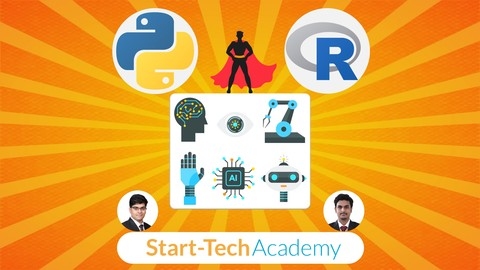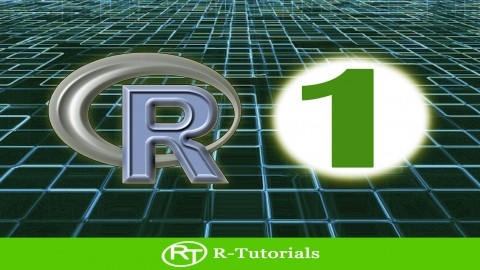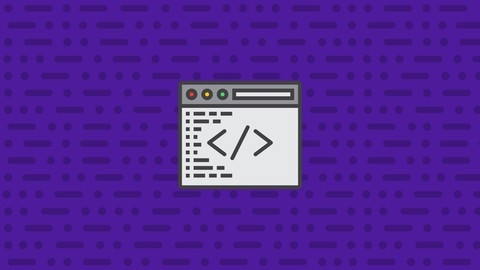R is a powerful language widely used for statistical analysis, data visualization, and machine learning.
By learning R, you can unlock a world of possibilities, from analyzing complex datasets to building predictive models and creating insightful visualizations.
Whether you’re a data scientist, a researcher, or simply interested in exploring the world of data, R can be a valuable tool.
Finding the right R programming course on Udemy can be a daunting task.
With so many options available, it’s easy to feel overwhelmed and unsure where to start.
You’re looking for a course that’s comprehensive, engaging, and taught by experts, but also fits your learning style and goals.
We’ve analyzed countless courses and based on our research, "R Programming A-Z: R For Data Science With Real Exercises!" is the best course overall.
This course stands out for its well-structured curriculum, practical exercises, and engaging teaching style.
It covers a wide range of topics, from the basics of R programming to advanced data manipulation and visualization techniques, making it a great choice for both beginners and experienced learners.
But if you’re looking for something more specialized, don’t worry!
We’ve got you covered.
Keep reading for our full list of recommendations and find the perfect R programming course to propel your journey in data science.
R Programming A-Z: R For Data Science With Real Exercises!
You’ll start with the “Hit The Ground Running” section, which includes a welcome challenge and instructions for installing R and RStudio on Mac and Windows.
This ensures you’re ready to dive into the course material right away.
The “Core Programming Principles” chapter covers the fundamentals of programming in R, including variable types, logical operators, loops, and control statements like “while,” “for,” and “if.”
You’ll also learn how to use the console and practice with a homework assignment on the law of large numbers.
Next, the “Fundamentals of R” section introduces you to vectors, vectorized operations, functions, and packages in R. You’ll apply these concepts to a financial statement analysis homework.
The “Matrices” chapter focuses on working with matrices in R, including creating, naming, subsetting, and visualizing them using matplot().
You’ll gain insights into basketball trends through a project and practice with a basketball free throws homework.
In the “Data Frames” section, you’ll learn how to import data into R, explore datasets, use the $ sign for column selection, perform basic operations, filter data frames, and visualize them using qplot().
A demographic analysis project and a world trends homework will reinforce these skills.
The “Advanced Visualization with GGPlot2” chapter dives into the powerful ggplot2 package for creating complex and customized visualizations.
You’ll learn about the grammar of graphics, factors, aesthetics, layers, statistical transformations, facets, coordinates, and themes.
A movie ratings project and homework on movie domestic gross percentages will allow you to apply these techniques.
The course also includes homework solution videos and a special offer section with bonus content on boxplots and a live training on unlocking top salaries.
Throughout the course, you’ll work with real-world datasets and complete hands-on projects, ensuring you gain practical experience in data analysis and visualization using R.
Data Science and Machine Learning Bootcamp with R
Starting with an introduction to data science and R programming, this course prepares you by covering setup procedures for Windows, Mac OS, or Linux, and familiarizes you with RStudio.
You’ll quickly move into practical programming, learning about variables, data types, and vector operations, along with essential data structures like matrices, data frames, and lists.
The course doesn’t stop at programming.
It extends into data manipulation, teaching you how to work with various data formats, including CSV and Excel, and even how to scrape web data.
This skill set is crucial for handling diverse data sources you’ll encounter in real-world scenarios.
Machine learning is at the core of this bootcamp, with detailed sections on linear and logistic regression, K-nearest neighbors (KNN), decision trees, random forests, support vector machines (SVM), and neural networks.
Each module includes a project, allowing you to apply theoretical knowledge to practical tasks, reinforcing your learning.
Data visualization skills are also covered, with tutorials on ggplot2 and Plotly, enabling you to create both static and interactive visualizations.
This is key for analyzing and presenting data effectively.
The capstone project culminates your learning experience, challenging you to apply all your acquired skills on a real-world problem.
R Programming: Advanced Analytics In R For Data Science
You’ll start with a warm welcome from the instructor, Kirill, who even shares an insightful podcast interview with R programming legend Hadley Wickham.
The course dives into essential data preparation techniques like handling missing data through methods like median imputation and deriving values.
You’ll master working with factors, a data type that often trips up beginners.
Cleaning and transforming data is crucial for any analysis, so these skills will serve you well.
Next, you’ll explore the powerful “apply” family of functions - apply(), lapply(), and sapply().
These allow you to efficiently perform operations across rows or columns of a data frame or list.
No more tedious loops!
You’ll even learn to nest these functions for advanced use cases.
Lists, a fundamental data structure in R, get their own dedicated section.
You’ll learn to create, subset, and manipulate lists with confidence.
Working with date-times is also covered to prepare you for real-world datasets.
Throughout the course, you’ll follow along with several data analysis projects spanning finance, manufacturing, and weather data.
The hands-on examples make the concepts stick.
And regular quizzes help reinforce what you’ve learned.
By the end, you’ll have leveled-up your R programming abilities substantially.
From data wrangling to functional programming, this course equips you with a versatile skillset for tackling complex analytics challenges.
Machine Learning & Deep Learning in Python & R
This comprehensive course covers a wide range of machine learning and deep learning techniques using both Python and R programming languages.
It starts with the basics of Python and R, ensuring you have a solid foundation before diving into advanced topics.
The syllabus begins by introducing you to essential Python concepts like arithmetic operations, strings, lists, tuples, NumPy, and data visualization libraries like Matplotlib.
You’ll learn how to work with pandas, a powerful data manipulation library, and explore machine learning prerequisites like data preprocessing, handling missing values, and creating dummy variables.
Moving on, you’ll dive into supervised learning algorithms like linear regression, logistic regression, K-nearest neighbors, and decision trees.
The course explains each algorithm in detail, guiding you through implementing them in Python using popular libraries like scikit-learn.
You’ll also learn about ensemble techniques like bagging, random forests, and boosting, which can significantly improve model performance.
The syllabus dedicates a substantial portion to R programming, covering data manipulation, visualization, and implementing machine learning models like linear regression, logistic regression, and decision trees.
You’ll learn how to preprocess data, handle missing values, and create dummy variables in R.
One of the highlights of this course is its comprehensive coverage of neural networks and deep learning.
You’ll start by understanding the basics of perceptrons and activation functions, then move on to building neural networks from scratch in Python.
The course covers essential concepts like gradient descent, backpropagation, and hyperparameter tuning.
You’ll also learn how to use popular deep learning libraries like Keras and TensorFlow to build and train neural networks for classification and regression tasks.
The syllabus also includes sections on convolutional neural networks (CNNs) and transfer learning, which are crucial for image recognition and computer vision tasks.
You’ll learn about filters, feature maps, pooling layers, and how to build CNN models from scratch in both Python and R. The course even includes a project where you’ll create a CNN model for image classification.
Throughout the course, you’ll work with real-world datasets, ensuring you gain practical experience in data preprocessing, model building, and evaluation.
The syllabus covers important concepts like train-test splits, cross-validation, and performance metrics like accuracy, precision, recall, and F1-score.
Additionally, the course delves into time series analysis and forecasting, a valuable skill for industries like finance, retail, and energy.
You’ll learn about techniques like ARIMA, SARIMA, and how to handle trends and seasonality in time series data.
R Programming for Statistics and Data Science
The course starts with an introduction to R and RStudio, guiding you through the installation process and familiarizing you with the user interface.
You’ll learn how to customize RStudio’s appearance and install packages, setting the stage for your R programming journey.
Next, you’ll dive into the building blocks of R, including creating objects, understanding data types (integers, doubles, characters, and logicals), and mastering coercion rules.
The course covers functions in R, teaching you how to use them and even build your own.
You’ll also learn the difference between using the script and the console.
Moving on, you’ll explore vectors and vector operations, such as indexing, slicing, and changing dimensions.
The course then delves into matrices, covering creation, indexing, slicing, arithmetic, and operations like transposition and multiplication.
The fundamentals of programming with R are thoroughly covered, including relational and logical operators, control structures (if-else, for loops, while loops), and advanced function building with scoping.
Data frames, a crucial concept in R, are introduced next.
You’ll learn how to create, import (including CSV files), export, index, slice, and extend data frames, as well as handle missing data.
Data manipulation is a key aspect, and the course utilizes the powerful Tidyverse and dplyr packages for data transformation tasks like filtering, sorting, and sampling.
You’ll also learn about tidying data with gather(), separate(), unite(), and spread().
Visualizing data is essential, and the course teaches you how to create histograms, bar charts, box plots, and scatterplots using the ggplot2 package.
Exploratory data analysis techniques are covered, including measures of central tendency (mean, median, mode), skewness, variance, standard deviation, coefficient of variability, covariance, and correlation.
The course also introduces hypothesis testing concepts like distributions, standard error, confidence intervals, types of errors, and tests for means (with known and unknown population variances).
Additionally, you’ll learn to compare means for dependent and independent samples.
Finally, the course dives into linear regression analysis, covering the regression model, correlation vs. regression, geometrical representation, interpreting regression tables, decomposition of variability (SST, SSR, SSE), and the R-squared value.
R Level 1 - Data Analytics with R
The syllabus starts with the absolute basics, guiding you through installing R and RStudio, navigating the interface, and understanding the R ecosystem.
You’ll learn about R’s help features and practice writing your first lines of code using basic functions.
This gentle introduction ensures you build a strong foundation before diving into more advanced topics.
Once you’re comfortable with the fundamentals, the course delves into the theoretical underpinnings of R. You’ll explore operators, object types, data types, and random number generation techniques like normal, Poisson, and uniform distributions.
Understanding these concepts will be invaluable as you progress.
A significant portion of the course is dedicated to creating and manipulating different data structures in R, such as matrices, lists, and data frames.
You’ll learn how to perform operations like matrix multiplication, extract subsets, and work with factors.
These skills are essential for effective data manipulation and analysis.
The syllabus also covers functions in R, including syntax, open-ended functions, and the powerful ifelse statement.
Mastering functions will allow you to write more efficient and reusable code.
Loops are another crucial topic, with lectures on for loops, while loops, and repeat loops.
You’ll practice using loops to solve problems, like calculating prime numbers, which will strengthen your programming abilities.
The apply family of functions is introduced, covering apply, tapply, lapply, sapply, vapply, replicate, mapply, and rapply.
These functions are incredibly useful for performing operations on arrays or lists, saving you time and effort.
Graphing capabilities are a strength of R, and the course dedicates a chapter to creating various plots, including boxplots, pie charts, histograms, and advanced scatterplots with legends.
You’ll learn how to customize these visualizations and export them for use in reports or presentations.
Additionally, the syllabus includes an advanced topic on working with strings in R, covering regular expressions and the stringr library.
This skill is valuable for text manipulation and data cleaning tasks.
Finally, you’ll be introduced to the R Commander GUI, an alternative to RStudio, which can be helpful for those who prefer a more user-friendly interface.
R Programming For Absolute Beginners
The course begins by guiding you through installing R and RStudio, familiarizing you with the interface, and setting up your working directory.
You’ll then dive into the fundamentals of R, learning how to work with vectors, matrices, arrays, lists, factors, and data frames.
These are the building blocks of data manipulation in R, and you’ll learn how to create, index, filter, and perform various operations on them.
The course also covers essential programming structures like loops, conditional statements, and user-defined functions, empowering you to write your own custom code.
One of the highlights is the comprehensive section on data frames, where you’ll learn how to create, load, index, filter, merge, and manipulate data frames – a crucial skill for data analysis.
You’ll also learn how to work with strings, including concatenation, manipulation, pattern matching, and regular expressions.
The course doesn’t stop there – it also covers plotting in base R, teaching you how to create scatterplots, line charts, bar charts, histograms, density plots, pie charts, and boxplots.
You’ll learn how to customize these plots by setting various parameters and adding trend lines or overlays.
Throughout the course, you’ll find practical exercises that reinforce the concepts covered in each section, ensuring you gain hands-on experience.
Additionally, there are bonus lectures on advanced topics like statistics and data analysis in R, as well as more advanced plotting techniques.
Introduction to Time Series Analysis and Forecasting in R
You’ll begin with an introduction that sets expectations and covers the basics of time series analysis and forecasting methods.
This section also includes an IT store staff allocation use case to illustrate real-world applications.
Next, you’ll dive into working with dates and times in R, a crucial aspect of time series data.
You’ll learn about different date/time classes like POSIXt, Date, and chron, as well as the powerful lubridate package for date/time manipulation and calculations.
The third section focuses on time series data pre-processing and visualization.
You’ll learn how to create time series objects, import data from various sources, handle missing values and outliers, and visualize time series data using charts and graphs like seasonplots.
Then, you’ll explore the statistical background necessary for time series analysis, including stationarity, unit root tests, autocorrelation functions (acf and pacf), and model comparison techniques.
With this foundation, you’ll move on to time series analysis and forecasting methods.
You’ll learn about quantitative models like seasonal decomposition, simple moving averages, and exponential smoothing.
Qualitative methods like judgmental forecasting are also covered.
A major focus is ARIMA (Autoregressive Integrated Moving Average) models, a powerful tool for time series analysis.
You’ll learn automated and manual ARIMA model selection, parameter identification, forecasting, and incorporating external variables.
The course also covers multivariate time series analysis using techniques like Vector Autoregressive (VAR) models and the Granger causality test.
You’ll gain hands-on experience with the relevant R packages.
Additionally, you’ll explore using neural networks for time series analysis, including autoregressive and multivariate neural network models.
Throughout the course, you’ll work with various datasets and complete exercises to reinforce your learning.
Quizzes are included to test your understanding at key points.
Complete Machine Learning with R Studio - ML for 2024
You’ll begin by setting up your R environment and learning the fundamentals of R programming, including working with packages, inputting data from various sources like CSV files, and creating basic plots like bar charts and histograms.
This lays a solid foundation for the subsequent topics.
Next, you’ll dive into the basics of statistics, exploring different types of data and statistics, graphical representations, measures of center and dispersion.
This statistical knowledge is crucial for understanding and applying machine learning algorithms effectively.
The course then introduces you to the world of machine learning, explaining its concepts and how to build machine learning models.
You’ll learn about data preprocessing techniques for regression analysis, such as gathering business knowledge, data exploration, handling outliers, missing value imputation, and variable transformations.
The syllabus covers linear regression models in detail, including simple and multiple linear regression, assessing model accuracy using metrics like R-squared, and techniques like test-train split and bias-variance trade-off.
You’ll also explore other regression models like ridge regression and lasso.
For classification problems, you’ll learn about logistic regression, linear discriminant analysis, and the K-nearest neighbors algorithm.
The course teaches you how to evaluate model performance using confusion matrices and other metrics.
Decision trees, a powerful machine learning technique, are covered in-depth, including regression trees, classification trees, pruning, and ensemble techniques like bagging and random forests.
You’ll also learn about boosting methods like gradient boosting machines (GBM), AdaBoost, and XGBoost.
Support vector machines (SVMs), a popular algorithm for classification and regression, are explained in detail.
You’ll understand the concept of hyperplanes, maximum margin classifiers, and kernel-based SVMs.
The course guides you through creating SVM models in R, including hyperparameter tuning for different kernels like linear, polynomial, and radial.
Throughout the course, you’ll have opportunities to apply the concepts through quizzes and hands-on exercises in R, ensuring you gain practical experience in implementing machine learning algorithms.
R Programming - R Language for Absolute Beginners
You’ll start by installing R and RStudio, the popular integrated development environment (IDE) for R. The course walks you through setting up your environment on Windows, ensuring you’re ready to dive into coding.
Once you’ve set up your tools, you’ll learn how to use R as a calculator, performing basic operations like addition, subtraction, multiplication, and division.
You’ll also explore mathematical functions like square roots, exponentials, and logarithms, giving you a solid foundation in using R for calculations.
From there, the course dives into vectors, the fundamental data structure in R. You’ll learn how to create, index, and manipulate vectors, as well as perform calculations on them.
This knowledge will be invaluable as you progress to more complex data structures like arrays, matrices, and data frames.
Speaking of data frames, you’ll spend a significant portion of the course working with this essential data structure.
You’ll learn how to create, index, modify, and manipulate data frames, which are crucial for data analysis tasks.
The course even includes a real-world example using Walmart sales data, where you’ll practice loading, cleaning, and analyzing a messy data set.
The course also covers topics like reading data from external sources like CSV files, Excel spreadsheets, and even MySQL databases.
You’ll learn how to work with different data types, including factors and dates, and how to use R’s powerful data manipulation and visualization capabilities.
As you progress, you’ll dive into functions, a core concept in programming that allows you to write reusable code.
You’ll learn how to define functions, pass arguments, and implement control flow structures like loops and conditional statements.
Finally, the course provides an overview of statistics in R, covering concepts like data distributions, central tendency (mean, median, mode), and measures of spread (variance, standard deviation).
You’ll learn how to visualize and compare distributions, as well as how to use boxplots to identify outliers.
Also check our posts on:










